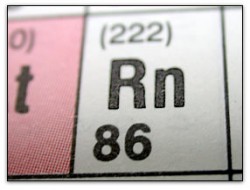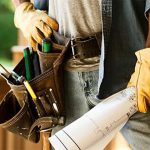You can not smell or taste it but it could be a issue in your home. It’s estimated to cause thousands of deaths every year. Radon is a cancer-causing, radioactive gas, & when you breathe air containing the gas, you can contract lung cancer. In reality, radon has now been declared the second primary cause of lung cancer in the U.S. Today. The only thing that causes lung cancer more than radon gas is smoking tobacco. If you smoke and your home has high radon levels, your threat of lung cancer is notably high.
Radon gas can be found all over the United States. It comes from the natural decomposition of uranium in soil, rock & water & get in the air you breathe. Radon can penetrate any type of building, housing, offices, schools & build up to high levels. But you & your family are most likely to contract the greatest exposure at home since that is where you spend most of your time.
Testing is the only way to know if you & your family are at risk form radon. The Environmental Protection Agency and the Surgeon General advocate testing all homes beneath the third floor for radon. It is inexpensive & simple to do testing & it merely takes a few min of your time. Millions of homes in America have already been tested. Radon from soil gas is the lead cause of radon problems, but it can also enter the home through well water. & In a small # of homes, certain kinds of building materials deliver the gas, too. However, the building materials rarely cause the problem itself.
It has now been determined that almost one out of every fifteen households in the U.S. Is estimated to have elevated radon. Elevated levels of radon gas have been found in every Member State, including homes in your state.
The public has only recently begun showing awareness in this deadly, carcinogenic gas. Contact your state radon office for general information about radon in your area. While radon problems may well be more frequent in certain areas, 1 house could have a problem. Home buyers & renters are now asking about radon before they buy or rent a home.
While radon in water isn’t a concern in homes served by most public water supplies, it has been detected in some well water. If you have tested the air in your home & detected a radon problem, & your water comes from a well, contact a lab certified to radiation in the water to measure your water tested. If you are on a public water supply & are concerned that radon may possibly be entering your home through the water, contact your public water utilities.
All levels of radon gas are considered to put you at risk. The amount of risk can be by lowering the radon level in your home. A variety of methods can be used to reduce radon in your home. It has been determined that sometimes sealing cracks in floors & walls help to reduce radon. In other cases, simple systems using pipes & fans are used to reduce the gas. Major renovations can alter the level of radon in any home, always test again after you’ve some work done. Reliable test kits are available through the mail, in hardware stores & some other outlets.
As with other pollutants, there is some uncertainty about the significance of radon health risks. However, more is documented about the risks of radon than from a large amount other cancer-causing substances. This is because estimates of radon risks are based on studies of cancer in humans, such as underground miners.

















